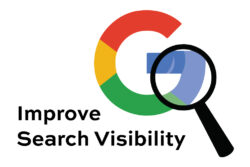Going Organic
What is the difference between Paid and Organic listings? Simply put, paying for a listing assures you a place of high visibility on search engines such as Google (where we’d recommend starting). In doing so, you are competing with other websites for placement (highest is the most expensive) based on your bid amount. This can be expensive; especially for an industry where just one sale can represent a significant amount of revenue.
The gold standard for online relevance is in increasing a websites’ “organic” ranking. Organic rankings are just that; based on your websites’ popularity, content, historical longevity, keywords (among many other things), you are given higher priority for searches that would point to your website. Think of it like this. Take a snowball and roll it down a snow-covered hill. As it rolls down the hill it picks up snow, the snowball gets bigger. The bigger it gets, the more snow it picks up and the process continues for as long as it continues to roll down the hill thus compounding much like an investment. How well and in what way the website is built plays a huge role in allowing this to be possible. But a lot of it also depends on specific tricks such as “feeding” traffic via backlinks (links to your site from other websites), social media, newsletters, etc.

Another way of looking at it is this: Pretend you are Google. Your company’s services viability is based solely on connecting a person searching for something with a website likely to provide that information. If Google doesn’t do a good job in connecting visitors with sites that provide what they are looking for – they won’t come back and the company loses millions in the process. Because of this, you can understand why Google is pretty picky about where they rank a link in their indexes. The higher up in the list, the more likely Google thinks you are what a visitor is looking for. How they determine this order is based on an “algorithm”; a magic ratio of qualifying factors they guard carefully to protect their investment.
So what is Google looking for? It’s next to impossible to know precisely, but there are quite a few things that are considered good practice. We can’t possibly list them all, but here are a few for reference.
- Site Content
- Site Keywords, Meta Content, Proper Tagging
- Age of Domain / Server
- Overall Traffic
- Frequency of Updates
- Domain Name (yes this does matter)
- Page Names
- Backlinks
- Site Structure / Framework
- Browser Compatibility
- Site Speed
- Site “readability” (Both in terms of font sizing and reading level)
- Internal, Inbound and Outbound Links
- Number of Pages
- Length of Pages
- Physical Size of Page (width of viewing area for example)
- Etc.
These are just a few of the optimization techniques that we consider when working on our client’s websites. But there are many more, each carrying a “value” for determining the overall score of your website.
